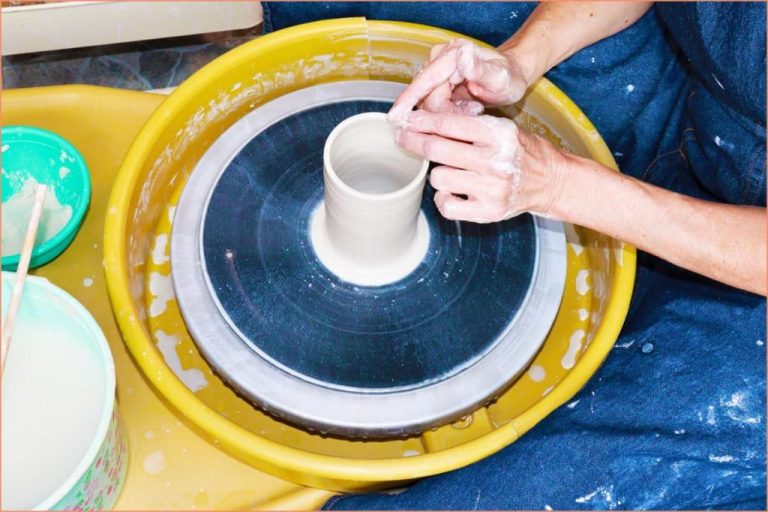Is Baking Soda Same As Soda Ash?
Baking soda and soda ash are both sodium-based compounds that are commonly used in cooking and cleaning. Baking soda, also known as sodium bicarbonate (NaHCO3), is a mild base that is activated when mixed with an acid like vinegar or lemon juice. It is used as a leavening agent in baking to help batters and doughs rise. Soda ash, also known as sodium carbonate (Na2CO3), is a more caustic base that is used to regulate pH and alkalinity. While baking soda and soda ash share some similar uses and properties, they are distinct chemicals with differences in their chemical composition and reactivity.
Chemical Composition
Baking soda and soda ash have different chemical compositions and formulas. Baking soda is sodium bicarbonate with the chemical formula NaHCO3. It is a mild alkali that readily decomposes into sodium carbonate, water, and carbon dioxide when heated. According to Wikipedia, baking soda is “a salt composed of a sodium cation (Na+) and a bicarbonate anion (HCO3−)” (1).

Soda ash, also known as sodium carbonate, has the chemical formula Na2CO3. It is a salt composed of sodium cations (Na+) and carbonate anions (CO32−). Soda ash is alkaline with a pH of 11. According to the Camachem blog, “Soda ash is the common name for sodium carbonate (Na2CO3), a chemical refined from natural sodium carbonate ores or manufactured synthetically” (2).
In summary, baking soda contains sodium, hydrogen, carbon, and oxygen, while soda ash contains only sodium, carbon, and oxygen. When baking soda is heated, it decomposes into sodium carbonate, which is soda ash, plus water and carbon dioxide. So while related, they have distinct chemical makeups.
Uses
Baking soda and soda ash both have a variety of uses, though there are some differences. Baking soda is commonly used in cooking to leaven baked goods, provide lift to cakes, soften beans during cooking, and reduce acidity in recipes. It can also be used as a mild abrasive cleaner for things like cookware, sinks, bathtubs, and even teeth.
Soda ash has some uses in cooking, such as for pretzel preparation, but is more commonly used in manufacturing for applications like glass production, pulp and paper processing, and water treatment. It is useful for increasing pH and softening water. In cleaning, soda ash is used in commercial applications and heavy-duty cleaners, though baking soda can sometimes be used interchangeably in home cleaning.
While both have overlapping uses, baking soda tends to be preferred for home kitchen and cleaning applications, while soda ash has more industrial and commercial roles. However, they are chemically related compounds with some substitutability.
Cooking
Baking soda and soda ash have some similarities but also important differences when it comes to cooking and baking. Both baking soda (sodium bicarbonate) and soda ash (sodium carbonate) are alkaline compounds that can be used as leavening agents. However, they react differently when exposed to heat and acids.
Baking soda is more commonly used in baking because it reacts with acidic ingredients like yogurt, buttermilk, vinegar, lemon juice, etc. to produce carbon dioxide bubbles that make batters and doughs rise. Soda ash does not readily produce CO2 when mixed into batter. According to Moms Who Think, baking recipes that only call for baking powder actually contain both baking soda and an acidic ingredient that react together once liquid is added.
Soda ash is more alkaline than baking soda, so it can lead to an undesirable soapy or bitter taste if too much is used in recipes. Baking soda has a more neutral pH and won’t negatively impact flavor as much. Soda ash may be utilized in some specific baking applications when a very alkaline environment is needed for chemistry reasons, but it is not a common household leavening agent.
In summary, for most cooking and baking purposes, baking soda is the preferred choice over soda ash for activating risen baked goods. Baking soda produces leavening through acid-base reactions without imparting harsh flavors.
Cleaning
Baking soda and soda ash can both be used for cleaning purposes, but there are some differences in their effectiveness for various applications.
For cleaning and deodorizing carpets, baking soda is very effective. It can be sprinkled on carpets directly and vacuumed up after letting it sit for a time. The abrasiveness of baking soda helps lift dirt and odors from carpet fibers. Soda ash is not as well suited for carpet cleaning.
For cleaning laundry, soda ash (washing soda) is preferred over baking soda. Washing soda helps remove oils and grime from clothes more effectively. It also softens water which allows detergents to work better. Baking soda can also be added to laundry as a odor remover and whitening agent, but is not as powerful of a detergent booster as soda ash.
Both baking soda and soda ash can be used in cleaning bathrooms. Baking soda makes an effective mild abrasive for scrubbing surfaces like sinks and tubs. Soda ash cuts through soap scum and limescale buildup. Using both together provides cleaning power and odor elimination.
For cleaning drains, soda ash loosens clogs more effectively than baking soda. It reacts with the fatty acids in clogs to dissolve them better. Baking soda is not as reactive for drain cleaning.
When cleaning ovens or burnt pans, washing soda works better than baking soda. The higher alkalinity of soda ash helps it cut through tough burnt on grease and carbonized grime that baking soda cannot remove as easily.
Manufacturing
Baking soda and soda ash are manufactured through different industrial processes. Baking soda (sodium bicarbonate) is produced through the Solvay process, which involves converting sodium chloride (table salt) into sodium carbonate (soda ash) which is then further processed into baking soda. Soda ash (sodium carbonate) is manufactured by the Solvay process which neutralizes salt brine with ammonia and carbon dioxide to precipitate out sodium bicarbonate which is then calcined to produce soda ash.
The Solvay process for manufacturing baking soda begins by dissolving salt in hot ammonia to produce sodium chloride and ammonium chloride. Carbon dioxide is bubbled through this solution to convert the sodium chloride into sodium bicarbonate which precipitates out and is filtered and heated to produce baking soda.
To produce soda ash, the sodium bicarbonate from the Solvay process is further processed by heating it to drive off carbon dioxide and water, leaving behind pure sodium carbonate or soda ash. This is known as calcining. The soda ash is dissolved, filtered, and recrystallized to obtain the final commercial product.
References:
https://www.madehow.com/Volume-1/Baking-Soda.html
https://en.wikipedia.org/wiki/Solvay_process
Safety
Baking soda and soda ash have some key safety considerations to be aware of when handling and using them.
Baking soda is generally recognized as safe for consumption and is a common ingredient in food. However, inhaling baking soda dust can irritate the throat and lungs (Solvay). When cleaning with baking soda, it’s advised to wear gloves and avoid inhaling the dust.
Soda ash can cause eye and skin irritation on contact (Solvay). When handling soda ash during manufacturing or other uses, protective equipment like gloves, safety goggles, respirators and protective clothing should be worn. Ingestion of soda ash can cause gastrointestinal irritation.
Both chemicals are non-flammable. However, when heated, baking soda can decompose into sodium carbonate, water and carbon dioxide, while soda ash decomposes into sodium oxide and carbon dioxide (Solvay, Solvay). Proper ventilation is important when handling both at elevated temperatures.
Cost
Baking soda is widely available and inexpensive. A typical box of baking soda costs less than $1 at most grocery stores and retailers like Walmart. It can be purchased in bulk quantities for even lower per-unit costs.
Soda ash is more specialized and costs substantially more than baking soda. On Amazon, a 30 lb bag of soda ash costs around $60 (estimate $2/lb). At specialty retailers, soda ash can cost $5-10 per pound. Purchasing in bulk brings down the per-unit cost, but soda ash remains far more expensive than baking soda.
For most household uses, baking soda is the clear value choice. However, certain industrial applications that require pure soda ash may justify paying a premium. When a recipe or process calls specifically for soda ash, it is difficult to substitute common baking soda due to chemical differences.
Substitutions
Baking soda and soda ash can sometimes be substituted for each other in recipes and household uses, but there are important differences between them that must be considered.
In cooking, baking soda can often be used in place of soda ash when baking. For example, some cookie recipes call for baking soda while others call for soda ash. The amounts are different, but they can usually be swapped. However, when cooking at high temperatures, baking soda can break down and lose its leavening power, while soda ash remains stable. So for some baking applications, only soda ash should be used.
For cleaning uses, a pure form of baking soda can effectively substitute for soda ash in many instances. But care must be taken to use the right amounts, as baking soda is less alkaline. According to Camachem, baking soda must be heated to at least 50°C to function the same as soda ash in cleaning solutions.
In manufacturing and industrial applications, the differences between baking soda and soda ash become more significant. Soda ash is able to withstand much higher temperatures and harsher chemical conditions. Substituting baking soda in these situations will likely lead to poor results.
Overall, baking soda and soda ash have overlapping uses in some home and cooking applications. But they are chemically distinct compounds that cannot fully replace one another in all situations, especially in manufacturing uses. Care should be taken to use the right substance for the specific application and conditions.
Conclusion
In summary, while baking soda and soda ash are related compounds, there are some key differences between them:
- Baking soda is sodium bicarbonate (NaHCO3), while soda ash is sodium carbonate (Na2CO3).
- Baking soda is a mild base that can weakly increase pH, while soda ash is a much stronger base that can significantly raise pH.
- Baking soda decomposes when heated to release CO2, making it useful for baking. Soda ash does not decompose when heated.
- Soda ash is mainly used in manufacturing and industry, while baking soda has many household uses.
- Baking soda is generally safer and less irritating than soda ash.
- Soda ash is more effective for increasing alkalinity, while baking soda is better for mildly improving pH.
While they share some similarities and uses, their different chemical structures give baking soda and soda ash distinct properties that make each more suitable for certain applications.



